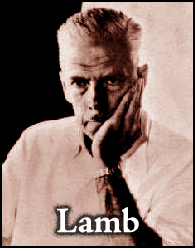Thursday, February 19, 2009
posted by Deuce Richardson
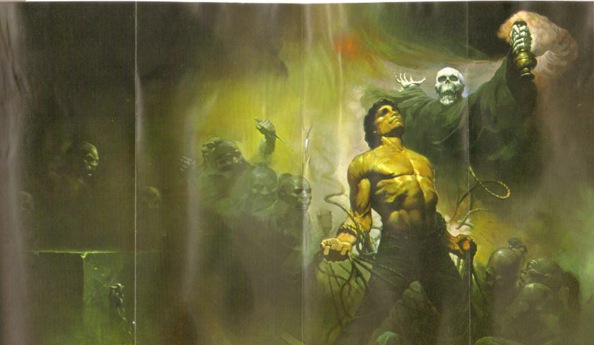
In his first letter to H. P. Lovecraft, Robert E. Howard informed HPL that he considered the Man From Providence to be superior to Machen or Poe. In other words, the finest horror writer of them all. In another letter (ca. June 1931), Howard wrote to Lovecraft that “the three foremost weird masterpieces” were Poe’s “The Fall of the House of Usher,” Machen’s “The Novel of the Black Seal” and last, but not least, “The Call of Cthulhu.” Thus, it is not surprising that some trace of REH’s enthusiasm for HPL’s landmark tale might be found in Howard’s own yarns.
“Skull-Face” would seem to echo with whispers out of R’lyeh. That is not to say “The Call of Cthulhu” was Howard’s only source of inspiration for his tale of Kathulos of Atlantis. Far from it. Over at the Official Robert E. Howard Forum, I went into some depth regarding the influence of Sax Rohmer’s writings upon “Skull-Face.” As I’ll demonstrate below, it appears that a Rohmer novel might have exerted some influence upon “The Call of Cthulhu” as well.
(Continue reading this post)
Saturday, February 14, 2009
posted by Steve Tompkins
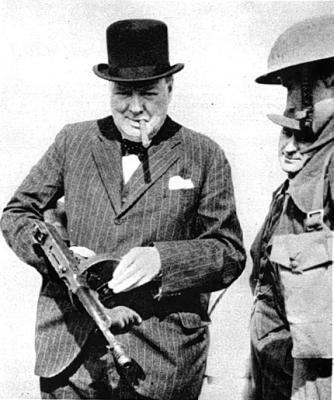
Great Cthulhu just keeps coming up around here; the stars must be right or something. As in a 2007 post, I’m uncomfortably aware that for a JRRT/REH/KEW adherent like myself to delve into Lovecraftian lore is rather like de-planing at JFK after an international flight, clearing Customs, and then making a scene in the main concourse by announcing my discovery of America. Such a claim would be more likely to irritate than impress bystanders, because of how well and truly discovered the New World already is. Similarly, all those decades of Esoteric Order of Dagon-zines and Necro Press journals weigh on the upstart like “something frightfully suggestive of old and unhallowed cycles of life in which our world and our conceptions have no part.” Here I go, though.
Let’s turn to the deathless first paragraph of “The Call of Cthulhu,” about which S. T. Joshi and Peter Cannon have this to say in their More Annotated H. P. Lovecraft (1999): “Arguably the most famous passage in Lovecraft’s fiction, setting forth his view of man’s precarious and insignificant place in the cosmos. The opening sentence has been enshrined in the fifteenth edition of Bartlett’s Familiar Quotations (1980).”
(Continue reading this post)
Friday, February 13, 2009
posted by Steve Trout
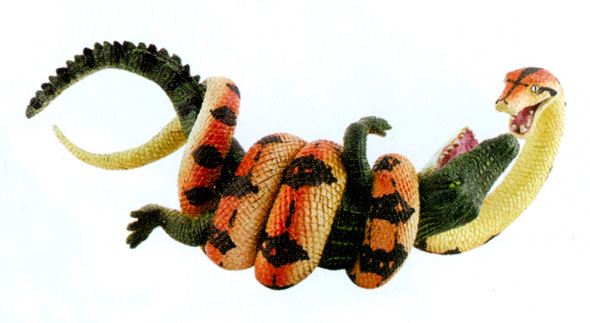
I hate snakes; they are possessed of a cold, utterly merciless cynicism and sophistication, and sense of super-ego that puts them outside the pale of warm-blooded creatures.
— Robert E. Howard to H. P. Lovecraft, ca. February 1931
“The visionary explorer, Col. P. H. Fawcett, claimed to have seen a 48-foot anaconda, but I don’t believe it.”
— L.Sprague de Camp, REHupa #57
Novalyne: Well, I haven’t seen any giant snakes, or big-busted naked women frolicking through the West Texas hills lately.
Robert: Oh, but I have.
— The Whole Wide World
From recent science news:
It was the mother of all snakes, a nightmarish behemoth as long as a school bus and as heavy as a Volkswagen Beetle that ruled the ancient Amazonian rain forest for 2 million years before slithering into nonexistence. Now this monster, which weighed in at 2,500 pounds, has resurfaced in fossils taken from an open-pit coal mine in Colombia, a startling example of growth gone wild.
“This is amazing. It challenges everything we know about how big a snake can be.””This thing weighs more than a bison and is longer than a city bus,” enthused snake expert Jack Conrad of the American Museum of Natural History in New York, who was familiar with the find.
“It could easily eat something the size of a cow. A human would just be toast immediately.””If it tried to enter my office to eat me, it would have a hard time squeezing through the door,” reckoned paleontologist Jason Head of the University of Toronto Missisauga.
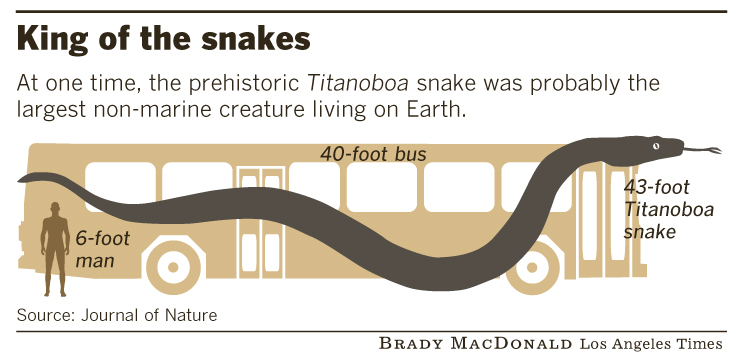
To give de Camp due credit, he was aware of the Gigantophis, a prehistoric python that was the previous record holder at 30-33 feet. And while boas get very large, they do not have the optimal climate for growth that Titanoboa apparently did — really hot, steaming jungles such as Howard assured us was Satha’s natural habitat.
Wednesday, February 11, 2009
posted by Deuce Richardson
I’m Deuce Richardson and I’ll be your blogger for this evening. I’m a native south-east Kansan and grew up working on my parents’ farm/ranch, the fourth generation of Richardsons to do so. At the age of nine I discovered Robert E. Howard and haven’t been right in the head since. Subsequent to graduating high school, I attended Kansas State and then Pittsburg State University. After that, it was time to get to work. In early 2005, I leapt into the twenty-first century by purchasing my own computer. That eventually led me to becoming a member on the Official Robert E. Howard Forum. Membership there landed me in various places like Cross Plains, Texas and then, surprisingly, here. Enough about me. On with the show.
Ever since a certain “Mr. O’Neail” wrote in to Weird Tales wondering, there has always been a question hovering, bat-winged, over Robert E. Howard’s novella, “Skull-Face”: Was REH’s “Kathulos” (and the tale thereof) influenced, somehow, by Lovecraft’s “The Call of Cthulhu”?
Howard had this to say in a letter to HPL (ca. August 1930):
A writer in the Eyrie, a Mr. O’Neail, I believe, wondered if I did not use some myth regarding this Cthulhu in “Skull Face”. The name Kathulos might suggest that, but in reality, I merely manufactured the name at random, not being aware at the time of any legendary character named Cthulhu — if indeed there is.
That’s that, I guess, but… all indicators point to Robert E. Howard reading “Call of Cthulhu” before he ever started composing “Skull-Face.” In a letter to Weird Tales, Howard demonstrates he’d already savored the darksome pleasures of “CoC” (published in the February 1928 issue of Weird Tales): “Mr. Lovecraft’s story, ‘The Call of Cthulhu’ is indeed a masterpiece, which I am sure will live as one of the highest achievements of literature.” (ca. April 1928)
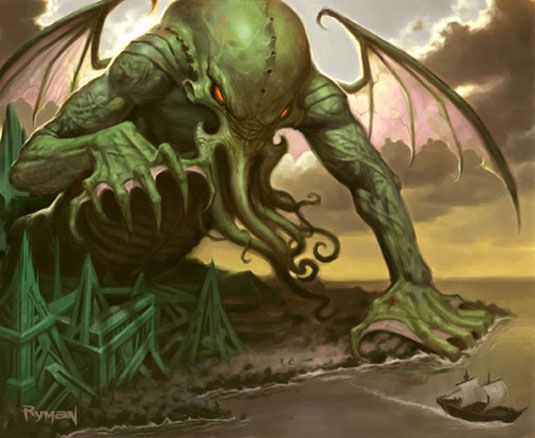
(Continue reading this post)
Wednesday, February 11, 2009
posted by Steve Tompkins
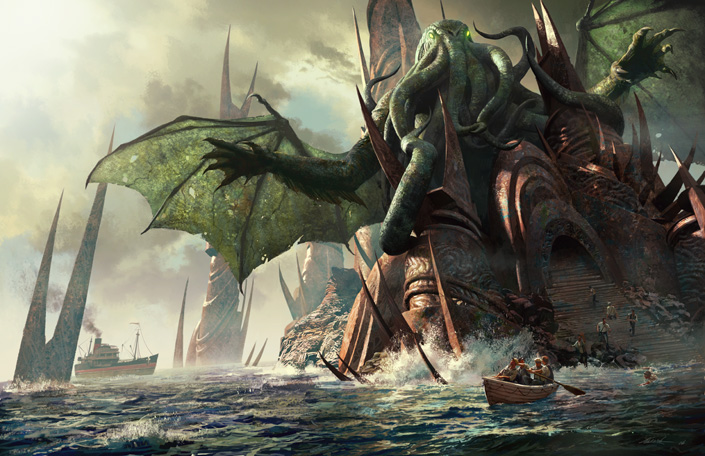
Part One: Hypersensitive, Not Hyperborean
Part Two: Cry ‘Havoc!’ and Let Slip the Hounds of Tindalos
Part Three: Autochthonic Masses Howling and Wet-Mouthed
He tried to struggle through Lovecraft pastiches, but at the first painfully serious reference to the Elder Gods, he felt some important part of him going numb inside, the way a foot or hand will go to sleep when the circulation is cut off. He feared the part of him being numbed was his soul.
Joe Hill, “Best New Horror”
The Disciples of Cthulhu. The Quest for Cthulhu. New Tales of the Cthulhu Mythos. Cthulhu 2000. In His House at the Federalist Society, Dead Chthulhu Waits Dreaming. The Children of Cthulhu. Cthulhu’s Heirs. Fall of Cthulhu Volume I: The Fugue. Acolytes of Cthulhu. High Seas Cthulhu. Frontier Cthulhu. Cthulhu’s Dark Cults. Age of Cthulhu: Death in Luxur. Hardboiled Cthulhu. The Strange Sound of Cthulhu. Cthulhu Has Two Mommies. Eldritch Blue: Love and Sex in the Cthulhu Mythos. Song of Cthulhu. The Spiraling Worm: Man Versus the Cthulhu Mythos. Gumshoe Trail of Cthulhu. Cthulhu on a Hot Tin Roof. Cthulhu Fhtagn, Baby! And Other Cosmic Insolence. The Conquering Sword of Cthulhu. Our Mutual Cthulhu. The Cthulhu Also Rises. Bright Lights, Big Cthulhu. And that list is limited to books that give the most Cosmic of Cephalopods star billing, a titular mention! The most merciful thing in the world, I think, is the inability of the human mind to correlate all the contents of today’s Mythos.
Thirty years after August Derleth was driven to conclude, while introducing Tales of the Cthulhu Mythos, that “Certainly the Mythos as an inspiration for new fiction is hardly likely to afford readers with enough that is new and sufficiently different in concept and execution to create a continuing and growing demand,” M. le comte’s “new and sufficiently different” desiderata have been more honor’d in the breach than the observance, yet we’re clearly dealing with a recession-proof industry. No doubt a bit of cooling-off has occurred since the irrational exuberance of the Nineties, when the fellahin flocked to Robert M. Price and wild beasts licked his hands, but if we recall Lovecraft’s “The Whisperer in Darkness” and a disclosure by Henry Akeley to Albert Wilmarth — “They could easily conquer the earth, but have not tried so far because they have not needed to. They would rather leave things as they are to save bother” — some of us might be tempted to interject “Save bother, hell! They’re sitting on their pseudopods because there’s money to be made!”
(Continue reading this post)
Saturday, January 31, 2009
posted by Steve Tompkins
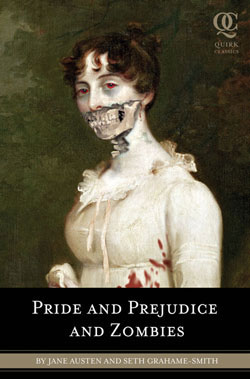
Now I know why I’ve been boycotting Jane Austen for decades; something was missing:
Pride and Prejudice and Zombies features the original text of Jane Austen’s beloved novel with all-new scenes of bone-crunching zombie action. As our story opens, a mysterious plague has fallen upon the quiet English village of Meryton — and the dead are returning to life! Feisty heroine Elizabeth Bennet is determined to wipe out the zombie menace, but she’s soon distracted by the arrival of the haughty and arrogant Mr. Darcy. What ensues is a delightful comedy of manners with plenty of civilized sparring between the two young lovers — and even more violent sparring on the blood-soaked battlefield as Elizabeth wages war against hordes of flesh-eating undead. Complete with 20 illustrations in the style of C. E. Brock (the original illustrator of Pride and Prejudice), this insanely funny expanded edition will introduce Jane Austen’s classic novel to new legions of fans.
Jane Austen is the author of Sense and Sensibility, Persuasion, Mansfield Park, and other masterpieces of English literature.
Seth Grahame-Smith is the author of How to Survive a Horror Movie and The Big Book of Porn. He lives in Los Angeles.
Hope Keira Knightley can clear her schedule…
Thursday, January 29, 2009
posted by Steve Tompkins

Kibbles ‘n’ bits, quibbles and snits this morning, beginning with the Dark Party Review site’s chat with Joakim Zetterberg of Paradox Entertainment. It is soon apparent that Howardian English is not Mr. Zetterberg’s first language, as he describes Conan as “strong as an oxe [sic], yet quick as a panther.” Things really fall off a Cimmerian cliff when he’s asked to debunk “the single biggest misconception” about the character:
While stuck with the epithet “Barbarian” I find him being far from it. Yes, he beats up quite a lot of people but we all know they deserve it. He has a very straight-forward moral code which is easy to understand. He does what he has to do to survive which is more or less a combination of common sense and taking matters into his own hands. He only makes a couple of moral sidesteps with today’s standards, like when he needs money for food. But barbarian, nope.
Zetterberg might merit the benefit of the doubt here –he’s presumably trying to banish the stereotype of the monosyllabic-and-Germanically-accented fur jockstrapper — but as gormless as their efforts were, even L. Sprague de Camp and Lin Carter never decoupled Conan from that conceptual be-all and end-all for REH the barbarian. “He beats up quite a lot of people” and the rest of the answer really suggest some sort of caped crusader. Please stop, or at least coach, this man before he’s interviewed again.
(Continue reading this post)
Wednesday, January 21, 2009
posted by Steve Tompkins

With luck a couple of Edgar Allan Poe straggler-items won’t seem excessive. The slideshow of Poe manuscripts and letters at the Paper Cuts blog of the New York Times is not to be missed, and be sure to click on the link to a PDF of “What Literature Owes to Edgar Allan Poe,” a rewarding trip in the wayback machine to the mindset of 1909 as the newspaper acknowledges Poe’s Centenary. Where we might expected overstuffed prose, a stylistic portliness suggestive of the about-to-be-inaugurated William Howard Taft, the NYT‘s Percival Pollard is gratifyingly lively: “Halls of fame are largely built by press agents and by prejudice. ” Of the post-Griswoldian EAP-bashers he says “[Poe] does not seem to have been much of an equestrian, or I am sure they would have said he was a horse thief.” The ink-stained tide is clearly turning in Poe’s favor; Pollard sees the animus of one region in particular as being washed away Howard-style by an influx of newer barbarians: “The New Englanders gave us sneers about Poe, and they themselves are now merely a convention that will die when the last New Englander has disappeared before the Celt and the Calabrian.” He does concede that “A halo of inebriety all too often encircles [Poe’s] head,” but then that’s also true of an Ard Righ or three in Howard Studies…
Anyone who has watched one or more seasons of HBO’s The Wire will recall that the West Baltimore corner boys, when they don’t call out “5-0! 5-0!” whenever the cops roll up on them, sometimes refer to “Po-po” instead. Obviously an unaffectionate diminutive of police, but it’s fun to pretend our Eminent Baltimorean is being commemorated.
(Continue reading this post)
Sunday, January 18, 2009
posted by Steve Tompkins
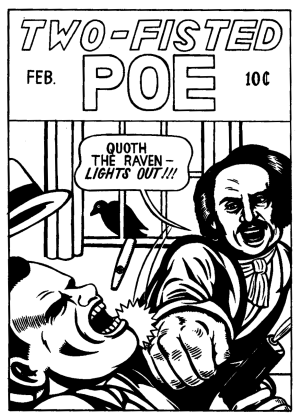
Monday, January 19, 2009 is the 200th birthday of America’s first-ever genre grandmaster, the writer described by Vincent Starrett as “a morose young man, stricken with poverty and genius.” Abraham Lincoln would follow Edgar Allan Poe into the world less than a month later (February 12, 1809), a fact that by 1860 must have had Poe draining several casks of Amontillado in the afterlife. And were his carry-me-back-to-old-Virginny spirit somehow to learn that he was sharing his special 2009 date with not only the Martin Luther King, Jr. holiday but also the eve of Barack Obama’s inauguration — well, the kindest thing might be for him to ascribe the double affront to delirium tremens so severe as to continue bedevilling even ectoplasm.
Back in January of 1809, were his last several weeks in utero uncomfortably reminiscent of being buried alive for our feted and fated fetus? When Eliza Poe’s contractions bore down and became task-oriented, did he experience birth as a just-in-time rescue-by-exhumation? Yes, I’m turning Poe into a Poe character with such questions, but that’s been going on since his own lifetime. As Leslie Fiedler describes the syndrome in Love and Death in the American Novel
Yet Poe produced, after all, one completely achieved work of art in his writing career, a character who belonged specifically to none of his stories though he is, in part, the creation of all of them — a composite of Julius Rodman, Gordon Pym, William Wilson, Roderick Usher, and all the other pale, tormented failures at aggression, exploration, and love, who are haunted, buried alive, or clasped the arms of corpses. That character, who is, of course, Edgar Allan Poe. . .Poe not only wrote but lived.
(Continue reading this post)
Sunday, January 18, 2009
posted by Leo Grin

At long last, the revised third Imaro novel has hit the mean streets, courtesy of Brother Uraeus’ Sword & Soul Media. This continues where Nightshade Books left off after they re-released Imaro (2006) and The Quest for Cush (2007), saving both titles from several decades of being trapped in publishing limbo. With The Trail of Bohu finally out, all three of the original Imaro novels published during the 1980s are back in print, each fully updated and ready to lure a new generation of readers into Saunders’ beguiling vision of a mystical, ancient Africa filled with heaping portions of Sword-and-Sorcery, captivating lost cultures, and above all the potent aroma of living myth. Cover artist Mshindo Kuumba has done another bang-up job after his standout work on Dossouye (2008), capturing the essential appeal of the series with an image both primitive and modern, familiar and exotic.
Now that Imaro 1, 2, and 3 are once again available, Charles is set to get to work on the fourth and fifth installments in the series, neither of which have seen print before. He hopes to get them both out by the end of the year, concluding the saga that he began as a young fan in the 1970s, getting his first stories published in fanzines and short fiction markets that paid in contributor’s copies. It’s been a hell of a long road, but I think that time will remember Charles R. Saunders as a pioneer in his field that blazed trails through some very lonely and treacherous literary jungles and savannas, paving the way for black fantasy writers yet unborn. It’s why I published Steve Tompkins’ long interview with Saunders in The Cimmerian V4n5 (October 2007), one that ultimately was as much about Robert E. Howard and the subgenre he created as it was about Saunders and his career. There’s history being made here, and it behooves us to recognize it.
After Imaro, I suppose Charles might continue with the adventures of Dossouye in another book, or perhaps go back to working on Abengoni, his projected multi-volume fantasy epic of Africans and Celts that he’s described as his own Lord of the Rings. But I hope that somewhere in the middle of all that work he finds time to update and republish his 1990 treatise on the sweet science, Sweat and Soul: The Saga of Black Boxing From the Halifax Forum to Caesars Palace. It’s been sold out and virtually impossible to find for many, many years now, and sounds interesting as hell.












